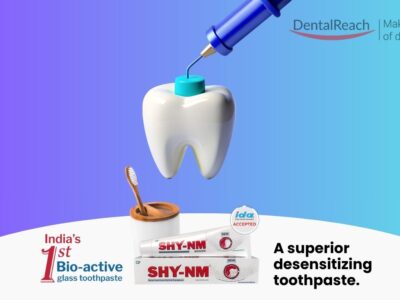We are approaching to re-opening of dental practise across the globe after a long “ Emergency Services Only” break from routine dental care. We are all ready to fight this “once in a century” pandemic with PPE gowns, face shields and N95 respirators.
Patient safety should be our first and foremost agenda without doubt but are we ignoring an important factor regarding patient affordability and access?!
At present, we are working on the assumption that 100% patients visiting our dental clinic are asymptomatic carrier of the virus but are we making decisions based on reliable sources of data?
In reality we lack reliable evidence on how many people have been infected with SARS-CoV-2 or who continue to become infected. The data collected so far on how many people are infected and how the epidemic is evolving are utterly unreliable.
In a paper by Chambers on base-rates in dental decision-making there is a quote (Chambers, 1999):
“Base your decisions on either the baseline alone or the evidence alone, depending on which one contains the most information.”
What we are seeing now is a rapid accumulation of both base-line data and evidence, but policy decisions about the future are being based on data and precautionary principles that were only valid at the start of this pandemic. Facts at this moment in time are constantly changing as this disease spreads, and what was true two weeks ago is now a distant memory.
As the guidelines regarding mandatory use of Personal protective equipment (PPE) and cross infection protocols that are flooding the profession of dentistry, it is now time to explore the real world effectiveness of the same. The data collected so far on how many people are infected and how the epidemic is evolving are utterly unreliable.
METHODS:
Firstly, on the 14th May the Office of National Statistics (ONS) in the UK published the results of its coronavirus (Covid-19) infection survey (ONS, 2020). This data was based on 10,705 participants’ swab tests taken over a two-week period from 27thApril to 10th May, the sample was drawn from households in which someone has already participated in an ONS survey to ensure the sample was representative of the wider population. From this sample 33 individuals in 30 households tested positive for COVID-19. This equates according to the ONS to 0.27% (95% confidence interval: 0.17% to 0.41%) of the population of England.
Secondly, one of the key problems with Covid-19 is asymptomatic spread (Bai et al., 2020) but there is no reliable data so any calculations here need to be looked on as a Fermi (back of an envelope) problem. To get a best estimate on the proportion of asymptomatic patients a a meta-analysis of the data presented on the Oxford Covid-19 Evidence Service (Heneghan et al., 2020) was conducted. The meta-analysis was carries out in R using a random effects model (See Figure 1.)
Figure 1. Forest plot of asymptomatic individuals

There are two points of note from this forest plot, the summary estimate for asymptomatic individuals is 27% (95%CI; 12 to 45%) and the heterogeneity between studies (variability) is extremely high.
The next stage is to put the base-rate and number of asymptomatics together in the form of a frequency tree. For ease of calculation I have rounded the figures so a base-rate of 0.27% becomes 1 in 400, and the number of asymptomatics becomes 30% (See Figure 2.).
Figure 2. Frequency tree of asymptomatic vs symptomatic

The frequency tree illustrates that in this population 1 out of every 1333 people could be an asymptomatic carrier of Covid-19.
As mentioned earlier, we are currently working on the assumptions that 100% of the patients visiting our dental clinics are infected ( and asymptomatic carriers ) rather than the actual number of infected patients i.e 0.075%.
NOTE: Here we have assumed that symptomatic patients would not visit the dental care facility or will be eliminated through initial evaluation before they reach the dental chair.
Table 1. Sample sizes for a well powered study into PPE effectiveness

CONCLUSION:
High quality PPE and staff training is a vital component of keeping everyone safe from this virus but we must be mindful of the other effects that perfect practice can have on the health economics and affordability of health care to those most vulnerable.
REFERENCES:
1. BASTIAN, H. 2020. A rebuttal to “A fiasco in the making?” [Online].
2. HENEGHAN, C., BRASSEY, C. & JEFFERSON, T. 2020. COVID-19: What proportion are asymptomatic? [Online]
3. OANNIDIS, J. P. 2020. A fiasco in the making? As the coronavirus pandemic takes hold, we are making decisions without reliable data [Online]




















Comments